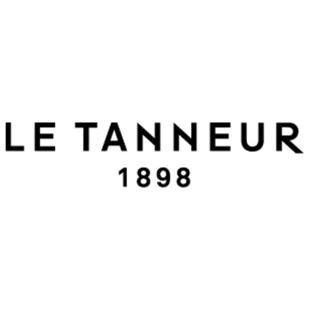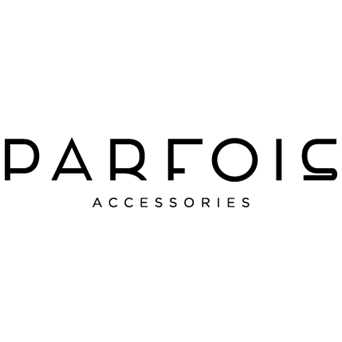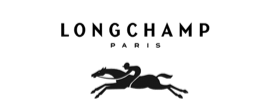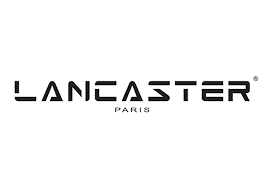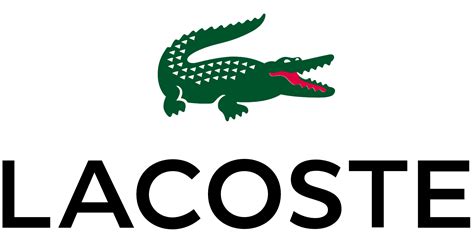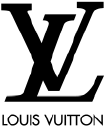Summary
The global handbag market, valued at $73.32 billion in 2022, is expected to grow at a compound annual growth rate of 6.8% to 2030, driven by increased purchasing power in developing countries and a greater number of working women. The French handbag market has also seen strong growth, with an increase of 28.4% in 2022 compared to 2021, reaching an estimated value of 7.6 billion euros, largely supported by exports due to the country's reputation for leather goods. France, Europe's second-largest producer of handbags after Italy, has significant domestic production, with a value of almost 1.656 billion euros in 2022 and a volume of 12.378 million units produced in the same year. The luxury leather goods segment within the broader leather goods market dominates, with French luxury brands such as LVMH and Hermès playing a leading role.
Despite a general downward trend in clothing budgets, with 80% of French consumers planning to reduce their spending by early 2023, the handbag sector continues to grow thanks to its reputation and the quality of its products.
Trends and dynamics in the French handbag market
In the French handbag market, notable trends have emerged, driven by consumer preferences and wider economic factors. Despite a period of reduced spending in the apparel sector, with a significant decline in the value of the apparel market of around 15% between 2007 and 2018, the handbag segment has maintained its resilience. Interestingly, while the overall apparel market has seen a slight increase in sales, reaching between €25 and €30 billion in 2022, this growth has moderated from the peak seen between 2020 and 2021.
French consumers are re-evaluating their consumption habits, with almost 80% expressing their intention to reduce their clothing budget in early 2023. This cautious approach is largely attributed to rising inflation and a reappraisal of fast fashion, which is driving individuals to shop second-hand and emphasize sustainability. The handbag market itself is undergoing a transformation: women, who make up the heart of the handbag customer base, are moving away from quantity to quality. The number of women owning several handbags seems to be declining. For example, the number of women owning just one handbag has risen significantly, while the number owning three or more has fallen considerably between 2014 and 2019.
The preference for fewer but better-quality handbags may represent a challenge for ready-to-wear brands known for selling in large quantities at lower prices. What's more, while price remains a central factor in the purchasing decisions of the majority of French consumers, quality and environmental impact are gaining in importance and influencing product choice. It is essential to note that, although sustainability concerns are on the rise, they still only represent a minority interest of around 27%.
On the demand side, national image plays a key role. France's reputation for craftsmanship in leather goods, particularly luxury items, is virtually unrivalled, placing it comfortably second among the most reputable countries for handbag manufacture. This perception is behind the strong export performance of French brands. Another feature of the market is the marked seasonality of handbag sales, which intensifies during the festive season, with quality handbags often becoming favored gifts for special occasions. French handbag production reflects the changing dynamics of the market and national manufacturers.
In 2022, handbag production climbed to almost 1.6 billion euros in value, doubling over the last decade. Production volume rebounded to pre-pandemic levels in 2022, with output of between 10 and 15 million units.
The titans of the French handbag market
In the field of fashion accessories, handbags occupy a special place as an object that is both useful and elegant. In this sphere, several key players have made their mark, not only on the French market but also worldwide, creating products that combine craftsmanship, luxury and innovation. Leading the way are the French luxury houses and specialist brands that have become synonymous with quality and elegance.
- Longchamp is the symbol of French handbag craftsmanship, offering a range of products that have captured the hearts of fashion-conscious consumers worldwide. Known for the iconic Le Pliage line, Longchamp has consolidated its reputation by combining traditional craftsmanship with modern design, ensuring that practicality does not sacrifice style.
- Lancel is another pillar of the French handbag industry, with a history of over a century in the creation of high-end leather goods. The brand is renowned for its exquisite materials and refined details, combined with a timeless aesthetic that appeals to discerning customers who value heritage and sophistication.
- Louis Vuitton, a name that resonates with luxury, is at the forefront of defining the contours of high-end fashion accessories. As a member of the LVMH group, Louis Vuitton handbags are a statement of opulence and status, showcasing meticulous craftsmanship and instantly recognizable design elements, such as the LV monogram.
- Chanel, another iconic figure in the luxury landscape, occupies a venerable position thanks to its classic and avant-garde creations. Chanel handbags, particularly the legendary 2.55, exude an air of chic elegance, embodying the spirit of Coco Chanel's innovative vision of modern luxury fashion accessories. In addition to these luxury giants, a number of ready-to-wear brands are also carving out a significant share of the handbag market.
- Zara, with its fast fashion approach, appeals to consumers looking for contemporary trends at affordable prices. The brand's ability to quickly translate high-end fashion trends into affordable handbag collections ensures a steady flow of customers.
- H&M, like Zara, operates in the fast fashion sector and offers a wide range of handbags to complement its clothing lines. The brand has a knack for offering cutting-edge fashion to budget-conscious consumers, making style accessible to a wider audience.
- Guess, known for its youthful, bold aesthetic, bridges the gap between mass-market retail and luxury. With handbags featuring its distinctive logo and eye-catching designs, Guess appeals to an audience looking to stand out from the crowd.
to understand this market
Detailed content
 Inforamtion
Inforamtion
- Number of pages : 30 pages
- Format : Digital and PDF versions
- Last update : 18/10/2023
 Summary and extracts
Summary and extracts
1 Market overview
1.1 Market definition and presentation
A handbag is a fashion accessory for storing everyday items (wallet, keys, etc.) that can be carried by hand or slung over the shoulder. It is a mass-market product, designed primarily for women, although the men's handbag segment is growing rapidly.The market is made up of a variety of products, distinguished by :
- Range and brand: luxury, high-end, mid-range, entry-level.
- Shape and size: tote, clutch, shoulder bag, bucket bag, etc.
- Material: leather, synthetic, textile, recycled, etc.
The global handbag market was estimated at $73 .32 billion in 2022, and is expected to grow at a CAGR (combined annual growth rate) of 6.8% to 2030. The strong growth of this sector is mainly due to the increase in purchasing power in developing countries such as India, and the growing number of women entering the job market, who demand handbags that meet the demands of professional life.
France is Europe's second-largest producer of handbags, after Italy, which alone accounts for almost 63% of European production. The domestic market is growing rapidly, with its value set to increase by 28.4% in 2022 compared to 2021. Export dynamism and the positive image of French leather goods are the main factors behind this growth. The market is therefore particularly dependent on foreign customers.In addition, new growth drivers are emerging, in particular the digitalization of the sector, the development of the second-hand market, and the growing attention paid by consumers to the eco-responsibility of the products they buy.
Leading French specialist players include Longchamp, Lancaster, Le Tanneur and La Bagagerie. these are complemented by specialized foreign players, notably Italians such as Gucci and Tuscany Leather. Ready-to-wear, accessories and shoe brands also often offer handbags by hand. From specialized multi-brand retailers to Internet sites, the sector boasts a large number of players, although there has been a trend towards concentration over the last few years.
1.2 France, a major international player
The global handbag market was estimated at $**.** billion in ****, and is expected to grow at a CAGR of *.*% to ****.
Global handbag market size projections World, **** - ****, in $ billions Source: ****
Growth in the global market is driven in particular by increasing purchasing power in developing countries. At the same time, more and ...
1.3 A fast-growing national market
Sales are calculated using the following formula: value of exports + value of production sold - value of imports. The data used will be detailed in sections *.*, on international trade, and *.*, on handbag production.
In ****, the French handbag market was estimated at *.* billion euros, an increase of around **.*% on ****. The national market ...
1.4 International trade
In order to find out France's international trade figures in the handbag sector, we'll need the following sector identification codes. In the Eurostat Prodcom database, trade in handbags is recorded under the code :
********: Handbags of leather, composition leather, patent leather, plastics, textiles or other materials (***)
In the French Customs database, ...
2 Demand analysis
2.1 Lower spending in the apparel sector
Today, handbags are still predominantly popular with women, who are their main customers. Although more and more handbag models for men are being developed every year with the emergence of "genderless" fashion[***], the popularity of these items is struggling to get off the red carpets and out of the fashion world. ...
2.2 Demand drivers: national image and sales seasonality
A favorable national reputation:
French products enjoy a positive image at home, of course, but also abroad. The country is renowned for its expertise in the production of leather goods, particularly luxury goods.
The international survey illustrated below shows how respondents of different nationalities perceive French handbag manufacture. France is in ...
2.3 Demand trends: second-hand and eco-responsibility
Second-hand:
The global second-hand fashion market has an estimated value of $*** billion in ****. According to forecasts, this market is set to grow significantly over the next five years, with a projected value of $*** billion by ****, almost double its current value[***]. The French second-hand fashion industry has seen notable growth, rising from ...
2.4 France's favorite brands
To find out what the French think of the sector's biggest brands, we're going to use an Opinionway survey on the brands preferred by the French. conducted in March **** with a representative sample of *,*** French Internet users aged ** and over.
Rate of appreciation of major handbag brands France, ****, in Source: ****
Ready-to-wear ...
3 Market structure
3.1 Handbag production
Source: ****
Most handbags sold in France are made by ready-to-wear brands, often foreign, who manufacture their bags abroad at much lower costs than those available in France. The handbags are then sold in their stores among their many other articles, or online via their websites.
However, some players continue to produce ...
3.2 Domestic production on the rise
In ****, French handbag production reached almost *.*** billion euros. The value of production has moreover doubled in ** years, testifying to the strong dynamism of French handbag manufacturing. Although production fell back slightly in ****, this was due to the health crisis.
French handbag production value France, ****-****, € billion Source: ****
French production volume has ...
3.3 The main players in the industry
In the handbag market:
The brands with the highest penetration rates are ready-to-wear brands such as H&M and Zara, as well as Longchamp and Lancaster. According to a Kantar study, these are the brands that attract the most consumers, followed by Guess, Le Tanneur and Lancel.
Ranking of handbag brands ...
3.4 A fragmented market that is gradually becoming more concentrated
In France, the handbag market is highly fragmented, with many different players. As we explained earlier, backpack manufacturers can be leather goods specialists, companies making bags of all kinds, including handbags, or ready-to-wear brands such as Zara or H&M. URSSAF lists the players in the handbag sector within the travel ...
3.5 Handbag distribution
Handbags are sold through several distribution channels, the main ones being :
stores specializing in the sale of handbags ; clothing and accessories stores (***) ; department stores (***); food superstores; the Internet (***).
Specialized stores are often manufacturers specializing in leather goods, who mainly offer handbags for sale, but also wallets and travel items. Some brands, ...
4 Offer analysis
4.1 Extremely diversified products
The handbag market can be divided into several segments, depending on the range, model or material used.
The different product ranges are as follows:
Luxury handbags: these are handbags made from high-quality materials (***) and using advanced processes. Luxury handbags range from €*** to several thousand euros. The world's most expensive handbag, for ...
4.2 Handbag prices
As mentioned in the previous section, handbag prices vary according to many factors, including brand, product type and material. However, the graph below highlights a general rise in prices for travel goods and other goods for carrying personal belongings, which include handbags.
In ** years, between **** and ****, prices in this product category ...
4.3 Model examples
The table below provides a sample of the models that have marked the history of the market.
5 Regulations
5. Regulatory framework
In-store sales:
In-store sales are subject to certain rules summarized by Legalplace:
safety and accessibility standards[***] ; compulsory displays for employees; indication of prices inside and outside the store in euros and including VAT; compulsory contribution to SACEM if music is played on the premises.
Clothing labels:
Clothing labels must include :
Composition ...
6 Positioning the players
6. Segmentation
- LVMH Groupe
- Lancel (Piquadro)
- Le Tanneur
- Vanessa Bruno
- Parfois - Modessa france
- Longchamp
- Michael Kors
- Lancaster Maroquinier
- Lacoste Groupe
- Vinted
- Anakiara
- Louis Vuitton Malletier
- Polène
- Couleur Sedona
- Goyard (Algo Groupe)
- Heimat Atlantica
- Léo et Violette
- Mansur Gavriel
- Nat & Nin
- PÖ&ME
- Shrimps
- Sonia Rykiel
- Staud
- Tammy & Benjamin
- Valencroix
- Yuzefi
- Zoatl
- Cabaia Valtex
- Hermès International
- H&M Groupe
- Leboncoin (Adevinta Group)
- Vestiaire Collective
- Guess
- Inditex groupe (Zara)
- Jacquemus
- Camille Fournet Maroquinerie
 List of charts
List of charts
- Market share of leading luxury leather brands
- Projected leather sales
- Projected size of the global handbag market
- Ranking of European handbag manufacturers by volume
- Size of the French handbag market
All our studies are available online in PDF format
Take a look at an example of our research on another market!
Latest news
Companies quoted in this study
This study contains a complete overview of the companies in the market, with the latest figures and news for each company. :
 Choosing this study means :
Choosing this study means :
Access to more than 35 hours of work
Our studies are the result of over 35 hours of research and analysis. Using our studies allows you to devote more time and added value to your projects.
Benefit from 6 years' experience and over 1,500 industry reports already produced
Our expertise enables us to produce comprehensive studies in all sectors, including niche and emerging markets.
Our know-how and methodology enable us to produce reports that offer unique value for money.
Access to several thousand articles and paid-for data
Businesscoot has access to all the paid economic press as well as exclusive databases to carry out its market research (over 30,000 articles and private sources).
To enhance our research, our analysts also use web indicators (semrush, trends, etc.) to identify market trends and company strategies. (Consult our paying sources)
Guaranteed support after your purchase
A team dedicated to after-sales service, to guarantee you a high level of satisfaction. +44 238 097 0676
A digital format designed for our users
Not only do you have access to a PDF, but also to a digital version designed for our customers. This version gives you access to sources, data in Excel format and graphics. The content of the study can therefore be easily retrieved and adapted for your specific needs.
 Our offers :
Our offers :
the handbag market | France
- What are the figures on the size and growth of the market?
- What is driving the growth of the market and its evolution?
- What is the positioning of companies in the value chain?
- Data from several dozen databases
Pack 5 études (-15%) France
- 5 études au prix de 75,6€HT par étude à choisir parmi nos 800 titres sur le catalogue France pendant 12 mois
- Conservez -15% sur les études supplémentaires achetées
- Choisissez le remboursement des crédits non consommés au terme des 12 mois (durée du pack)
Consultez les conditions du pack et de remboursement des crédits non consommés.




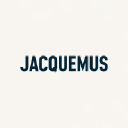 Jacquemus, the fashion "darling" looking to grow | Jacquemus looks to expand - 18/01/2024
Jacquemus, the fashion "darling" looking to grow | Jacquemus looks to expand - 18/01/2024
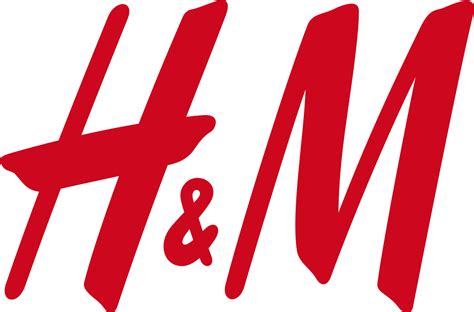 Host and Primark: The nightmare continues for H&M, overtaken by Shein - 15/12/2023
Host and Primark: The nightmare continues for H&M, overtaken by Shein - 15/12/2023
 Leboncoin: a $12 billion bid for the classified ads parent company - 22/11/2023
Leboncoin: a $12 billion bid for the classified ads parent company - 22/11/2023
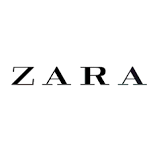 Five things you need to know about Inditex, the owner of Zara stores - 17/09/2023
Five things you need to know about Inditex, the owner of Zara stores - 17/09/2023


